Temperatures roller-coaster dipped into the cool stuff last weekend promising no more 80-degree days until Memphis in May and the exact right conditions to bend an arm under a dark, toasty/roasty fall beer.
For this, Memphians, you are in luck. New beers keep pouring into new Memphis-area taprooms. When Cooper House Project opens in Cooper-Young (hopefully soon!), Memphis will be home to 12 craft breweries. It’ll join Ghost River, Beale Street, Boscos, Crosstown, Grind City, Soul & Spirits, Hampline, High Cotton, Wiseacre, Memphis Made, and Meddlesome. Consider that only two craft breweries — Ghost River and Boscos — operated here nine years ago.
New beers are pouring into Memphis-area stores, too. Craft breweries from other markets are expanding their distribution circles, and new stuff is showing up on our shelves. Think of all the Nashville beers we can get here like Bearded Iris and Southern Grist, Urban South from New Orleans, and Deschutes from Bend, Oregon. This now also includes several non-alcoholic beers from brewers who want craft flavors without the hangover.
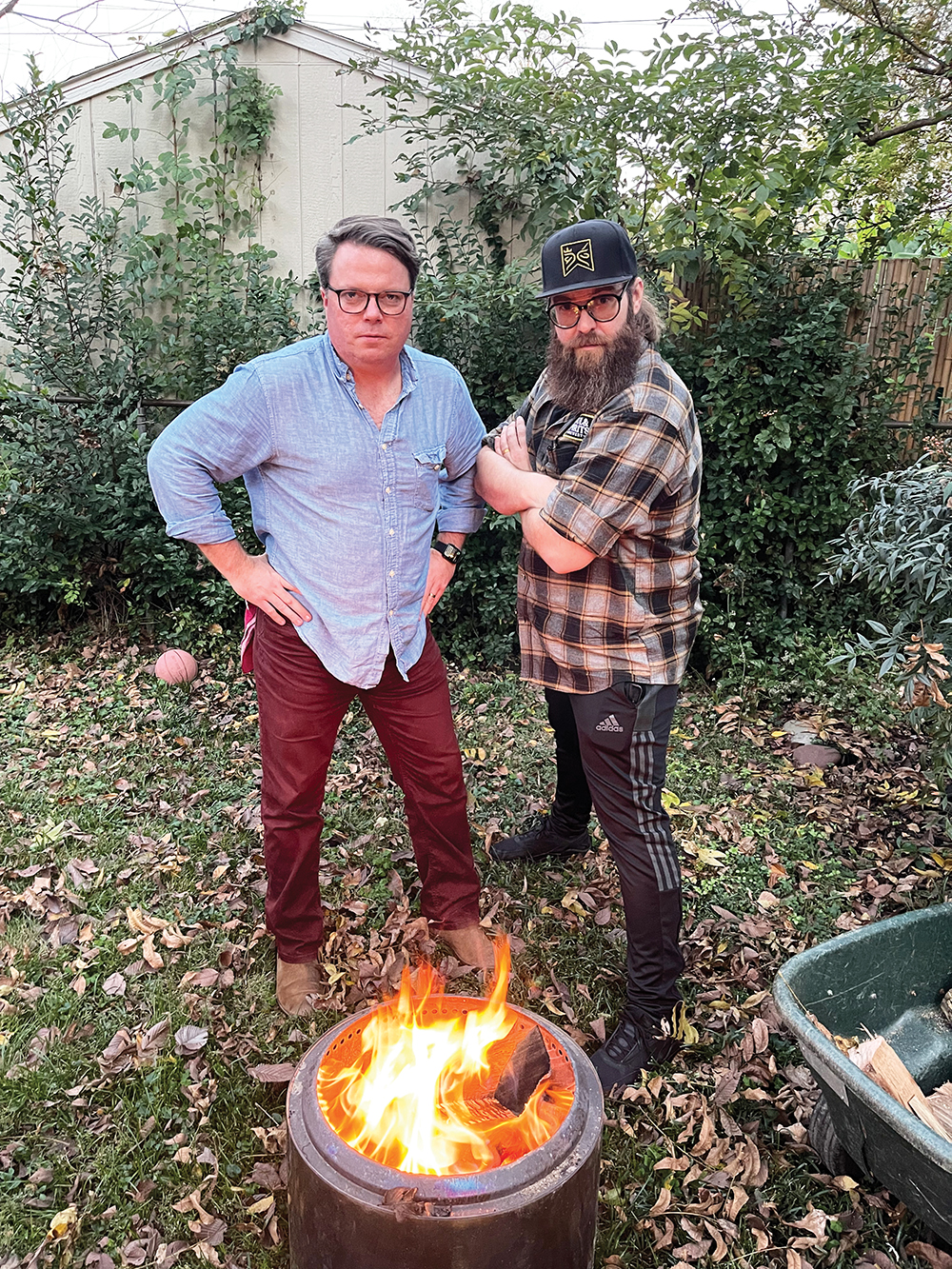
For this year’s fall beer guide, we rounded up a bunch of beers you can find around Memphis. This includes some from other markets and does not include every local brewery. Some breweries just didn’t have anything new that we’ve not written about already. We found our beers at Cash Saver and South Point Grocery (thank you, Taylor James!), both known for their wide selections. But you can find most of the beers in our tasting most anywhere.
Some brewers haven’t liked all of our staff comments in past beer guides. But our crew was asked to be honest. We taste and take notes, not as beer experts, but as typical Memphis craft beer consumers. (I mean, we don’t even have Untappd accounts.)
But we did have expert help. As in years past, we had a guide to help us understand the different styles and pick out flavors. This year, Ryan Allen, co-owner and master brewer at Soul & Spirits, shined a light on our path forward. He joined us in an undisclosed Midtown backyard as a few Flyer staffers drank beers from a cooler and wrote about them for work. Hell yeah.
There are plenty of beers to love on this list — and we did love some. But don’t take our word for it. Go grab a light jacket and a dark beer for yourself. — Toby Sells
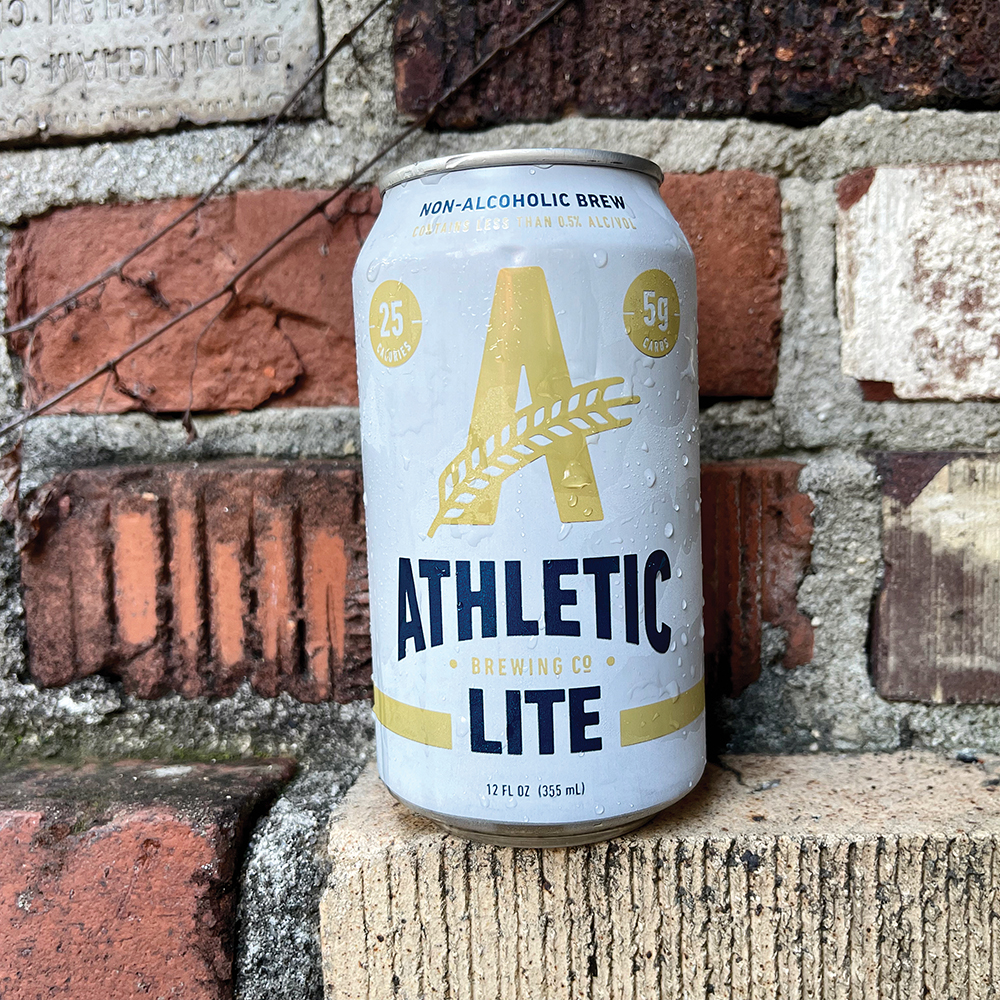
Athletic
Athletic Lite, light lager, 0 percent ABV
Ever leave a sixer in a hot car, discover it later, then put it back in the fridge? This reminds me of that — like a flat, forgotten Miller Lite. Not much flavor, but an easy drinker if you like playing pretend. — Shara Clark
It’s a light beer with no alcohol. Which I guess is like chewing on a candy cigarette in a cigar club. But to be fair, some people really like candy cigarettes. — Samuel X. Cicci
A non-alcoholic beverage that seems sort of pointless. Slightly fizzy, like LaCroix water. Yellowish color, like water that’s been, er, used. I’d prefer a LaCroix. — Bruce VanWyngarden
There’s nothing there and I guess that’s the point. It’s barely-beer-flavored fizzy water. — Toby Sells
The recent technological advances that have made decent-tasting NA beer possible are welcome. There’s a lot of good brews out there that won’t mess with your sobriety. Unfortunately, this is not one of them. Why make an NA beer taste like the lite beer designed to make 4.2 percent alcohol content more palatable? This beer makes me long for the bold flavors of tap water. — Chris McCoy
This non-alcoholic beverage is like drinking Holy Water from church, except the wrong fingers have been dipped in the font — fingers that have been in places God doesn’t approve of — so there’s a tinge of something that shouldn’t be there, making you question if this thing that’s supposed to be “good” for you is actually worth the way it goes down so smoothly. — Abigail Morici
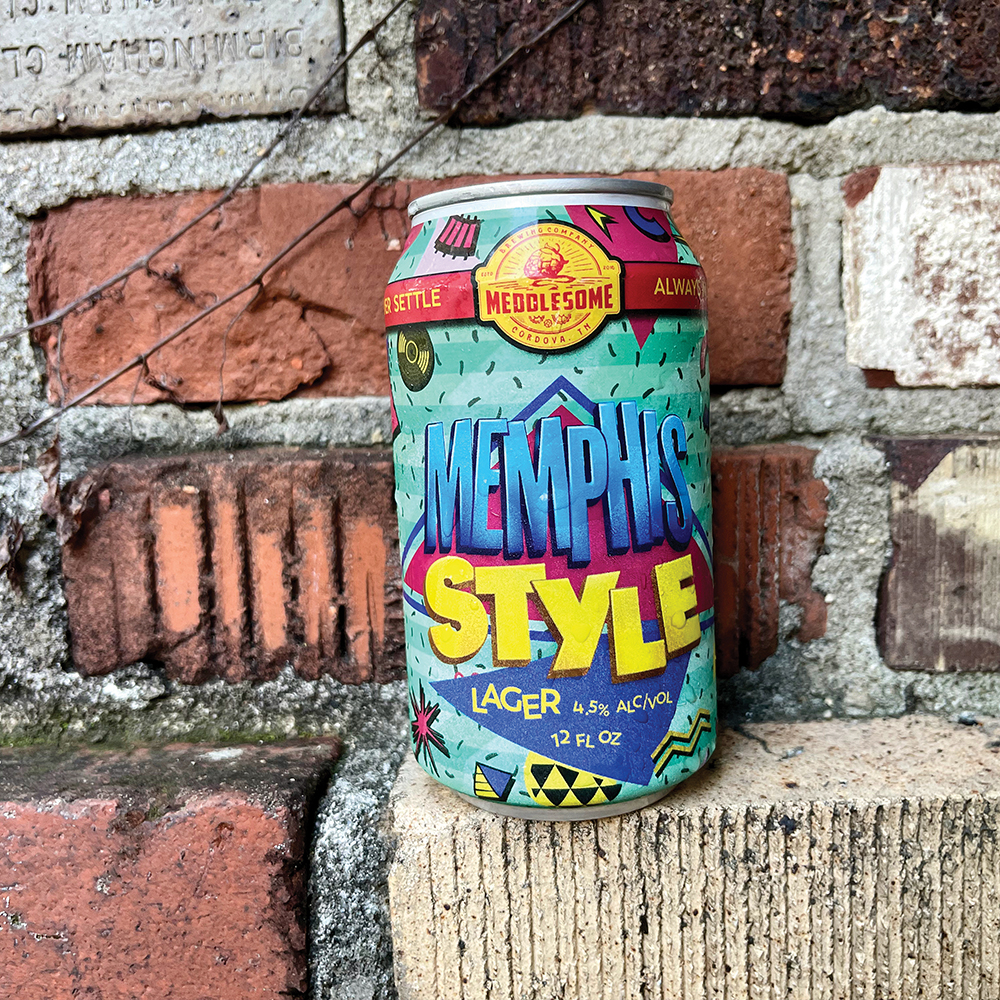
Meddlesome
Memphis Style Lager, light lager, 4.5 percent ABV
The can art reminds me of a ’90s-style Mead folder, but the beverage itself gives strong shower beer vibes. Lather up the shampoo, crack one open, and throw it back while the water washes the day away. This one’s a winner. — SC
It’s a nice, lighter malty lager. If you like lagers, go for it. But you’re gonna buy it anyway since the can is so fun with its minty-party-shenanigan-chic aesthetic. — SXC
This 4.5-percenter is right down the middle of my comfort zone. Tastes like beer, friendly and non-aggressive. I could see myself sitting down with a few of these. — BV
It tastes great. Now with that out of the way, let’s talk about the can. To holler at the ’80s Memphis design group on a beer can will delight any who appreciate obscure Memphiana. If you think it looks like Saved by the Bell, well, that’s fun, too. — TS
This beer is what you think you want when you order a domestic light beer. Because of Memphis’ great water, and being fresher than your average corporate beer product, it’s got a sharper and better flavor. — CM
The Memphis Style has the vibe of a crouton. We like croutons. But do we love croutons — that’s the question. — AM
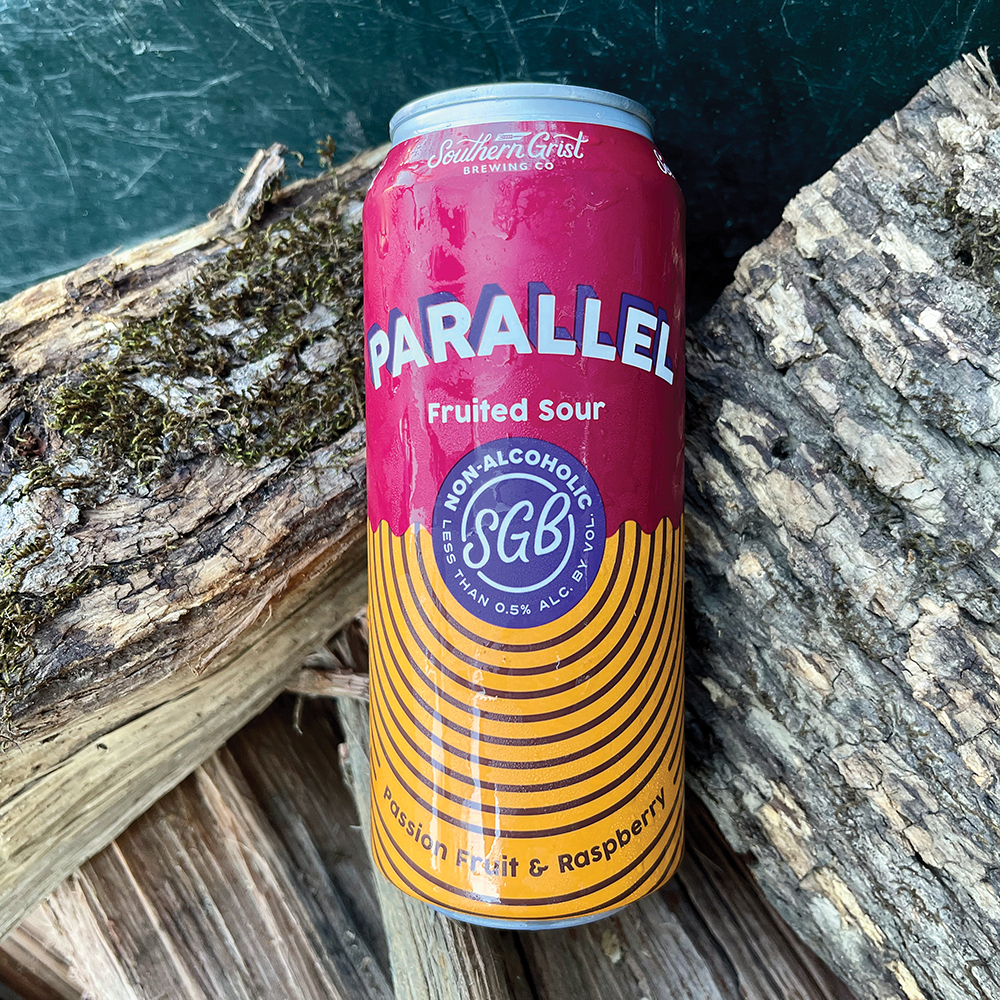
Southern Grist
Parallel Fruited Sour, sour, 0 percent ABV
This is another NA, which is good because you’ve got to be sober to say its name three times fast. Flavor- and texture-wise, this seems like nothing more than a fruit puree — or what you get in one of those bottles of daiquiri mixer. — SC
It’s bursting with passion fruit and raspberry, but not super sour, which I want in my beers. Also, it has no alcohol. Which I guess is like choosing to inhale a fruity candle in a hookah bar. — SXC
Another non-alcoholic brew that is in no way reminiscent of, well, beer. It’s pleasant tasting, but to me, this is a soda. — BV
This is one of the best NA beers I’ve ever tasted. It’s got the mouthfeel of a regular beer, and the flavors are tasty but not overwhelming. Most importantly, it’s not too sweet. — CM
The best snack when you’re in kindergarten is that cherry chapstick that you sneak a little nibble of, and this drink will take you back to those naughty moments — as if the chapstick-eating folk at Southern Grist melted down the worst chapstick, plastic tube and all, to find a new evil way to capitalize on nostalgia. — AM

Doc’s Cider
Sour Cherry Cider, sour, 6 percent ABV
This tastes like an Alabama Slammer Clubtails (those cheap, gas-station, 10-percent malt beverages) or a Black Cherry Four Loko. And if you’ve got more than two bucks to spend on booze, this is not a good thing. — SC
This sour-cherry concoction tested my gag reflex. Never bring this near my face again. — BV
This is the opposite of thin. It covers your tongue and palate with a sort of cherry medicine film. Do not recommend. — TS
UhhhlllllAAAAHHHHCHHA [yucky sound]! — CM
It’s like drinking the weirdly pink liquid that drips from a teeny tiny hole in a Febreze-scented garbage bag filled with rotting fruit and used Kleenex as you drag it to your garbage bins. — AM
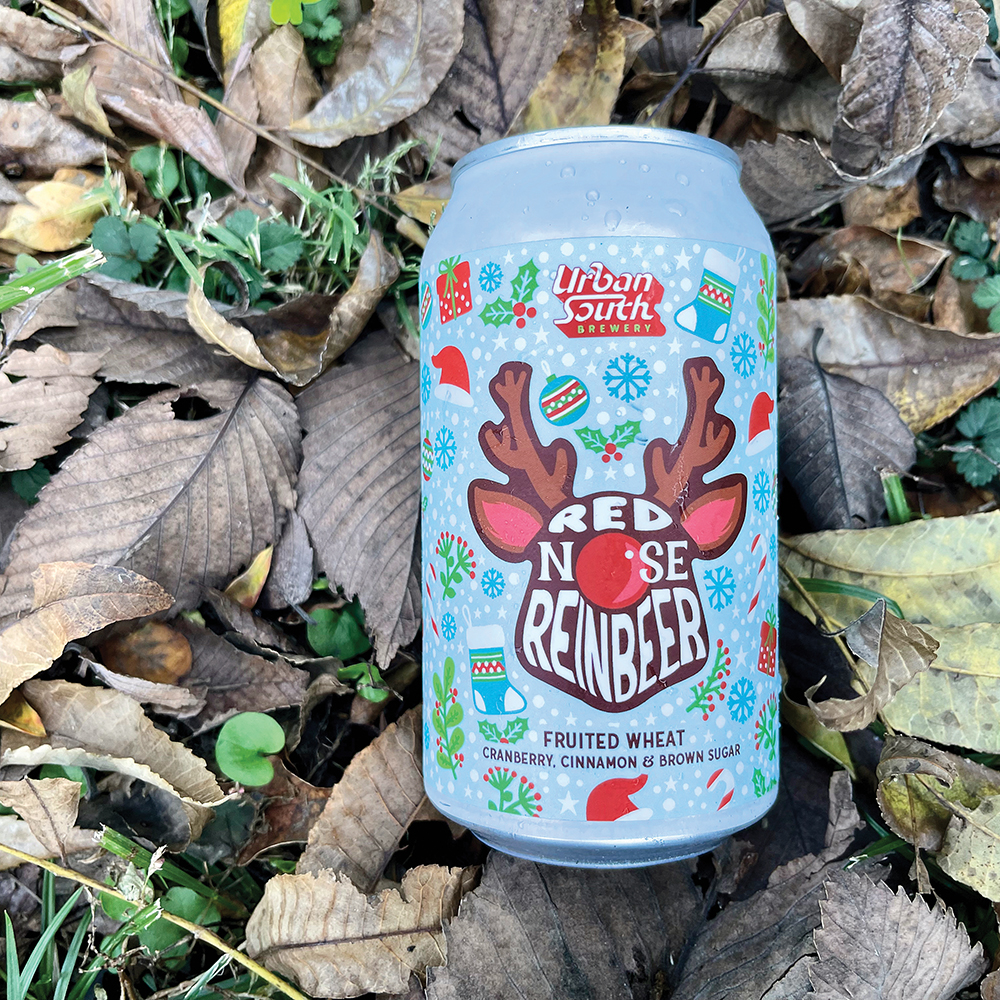
Urban South
Red Nose ReinBeer, fruited wheat, 5.4 percent ABV
The first sip gave me a little “Oh!” — light with a warm, spiced aftertaste. Subsequent sips sorta felt like peeling back the wrapping paper on a Christmas gift then settling into disappointment once you realize it’s just a pair of socks. — SC
Grandma got run over by a reinbeer while walkin’ home from our house on Christmas Eve. The suspect was a fruity wheat, with notes of cranberry, cinnamon, and brown sugar, but witnesses reported that the spices overwhelm any fruity taste. — SXC
I didn’t want to like this. But it’s Christmas in a can, really. Light on the cranberry flavor, heavy on the cinnamon and brown sugar. The taste turns flatter the more you drink, though. — TS
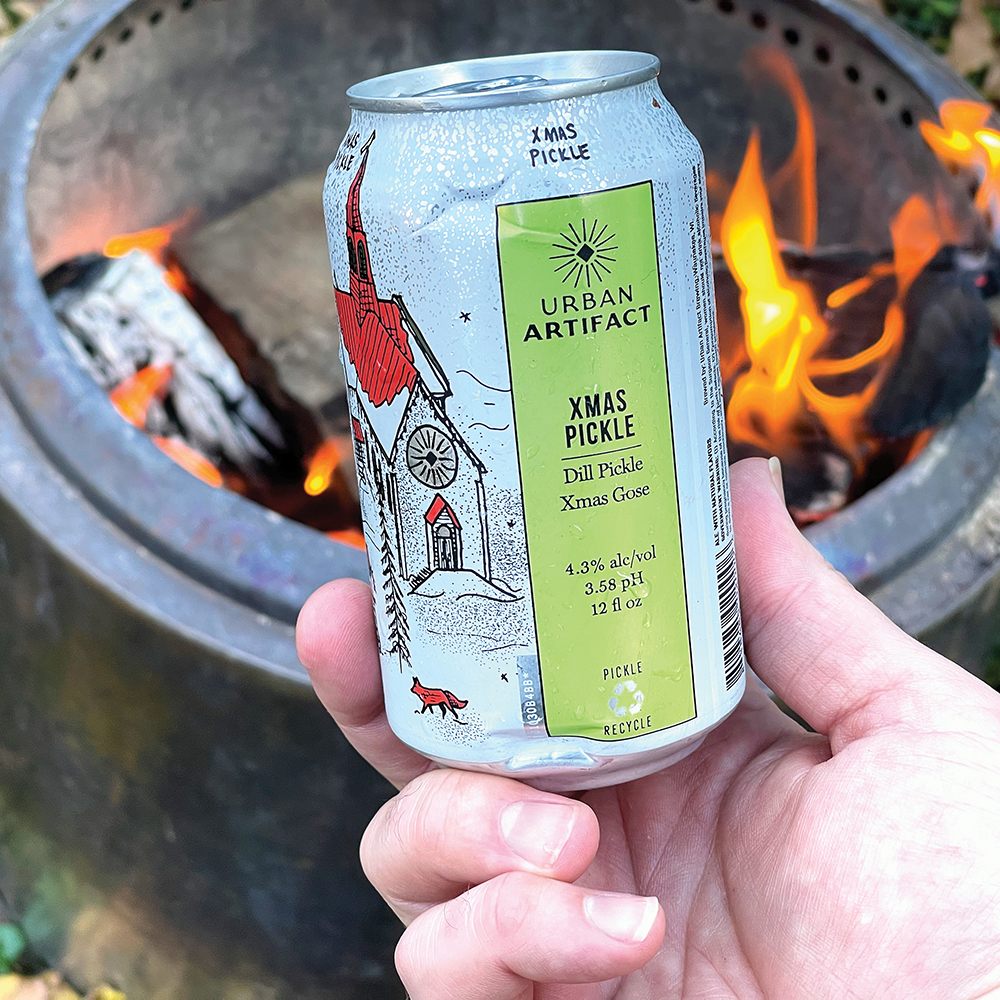
Urban Artifact
Xmas Pickle, sour, 4.3 percent ABV
What’s the dill with all these odd new beer types, eh? It’s a smooth, light, pickle-based gose. Little bit of salt, a nice clean pickle scent, a bit of tartness, but overall it doesn’t go too heavy on any of the strange flavor mixes. — SXC
It’s much like I’d imagine drinking the brine from a pickle jar would be, only with bubbles. It’s got some salt, as well. Might go well with a cheeseburger or something, but I would not drink this sans food. — BV
Ryan [Allen from Soul & Spirits] said pickle beers are on the rise. I ain’t tryna drink this all afternoon, but it’s crazy different and fun to explore. I bet it’s great with fried chicken. — TS
I wasn’t aware of the pickle beer trend before this tasting, and I’m not sure I’m on board with it. This one smells like a pickle more than tastes like one, and it’s by far the saltiest beer I’ve ever had. Bottom line: It’s not as bad as it sounds. — CM

Soul & Spirits
Polk Salad, fresh-hopped IPA, 6.1 percent ABV
The vibe: You’re sitting in a field, breeze blowing against your face, sipping a cold, carbonated herbal tea. Fresh hops here really gave this a crisp, clean drinking experience. Best IPA I’ve ever tried. — SC
This is a better IPA, made from fresh hops (grown in Memphis!) and packed with fresh greens. Not bad. And that’s coming from an IPA-hater. — SXC
This is the freshest beer I’ve ever had. Maybe I would not have described it that way if Ryan hadn’t told us about the fresh-hop process, but dang if I can’t taste it. My notes say “just so fucking good.” — TS
It starts with a great nose. The initial taste is light and crisp, with a bold finish. The fresh hops linger longer and add more complexity than you get with your average West Coast face-melter. This is one of the best IPAs I’ve ever tasted. — CM

Ghost River
Dunkelweizen Ale, Dunkelweizen, 8 percent ABV
It’s got a bit of a clovy taste. A lot of Ghost Rivers have a sameness to their taste, but this one breaks the mold. Kudos to the brewer. — SXC
This has a dark, caramel-ish initial taste. The texture is soft, almost melted buttery. A hint of dough. Not for every taste, but will hit the spot for many. — BV
Ryan de-mystified Dunkels for me, saying they’re basically Hefeweizens with darker malts (and that “Dunkelweizen” literally translates to “dark wheat”). This one has those banana flavors and lots of suds. Fun to drink, and extra points for crop circles on the can! — TS
This new “dark wheat” is one of the better offerings from the venerable Ghost River label. It goes down smooth, but be warned: It’s got an exceptionally high alcohol content. You can get yourself into trouble with this one. — CM
Have you ever licked the cracked side of a plastic Mardi Gras bead that’s lost its shine and sits in a puddle of spilled beer? Well, now, you don’t have to; this drink will do the trick instead. — AM
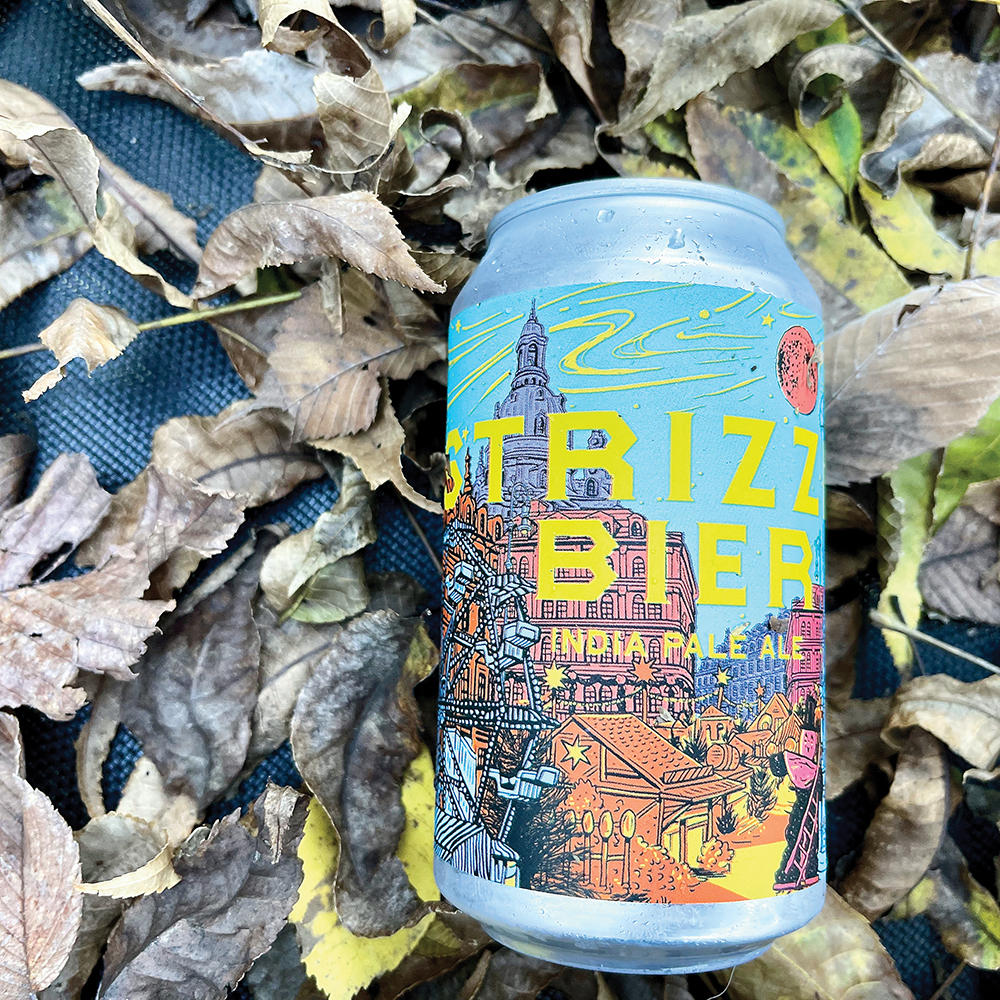
Wiseacre
Strizzle Bier, IPA, 6.2 percent ABV
Yipes. Bye-bye, taste buds. I think they were burned off by the bitterness. — SC
Wiseacre makes so many good beers that I don’t feel bad saying I don’t like this. It’s a weird fusion of IPA and brown ale, and I’m not sure those two styles ever truly reconcile. — SXC
Solid brew with a clean slight bitterness that isn’t off-putting. This one suits the season just right. — BV
IPA bros like myself (self-burn), rejoice! Your fall beer is here. It’s bitter, even a little fruity, and definitely all IPA. — TS
Not much nose, followed by a weird, muddled taste profile. It’s bitterness without context. Strizzle is a rare miss from Wiseacre. — CM
This tastes the way sliding a finger along a freshly Pledged table feels but without the pleasant lemon scent. — AM
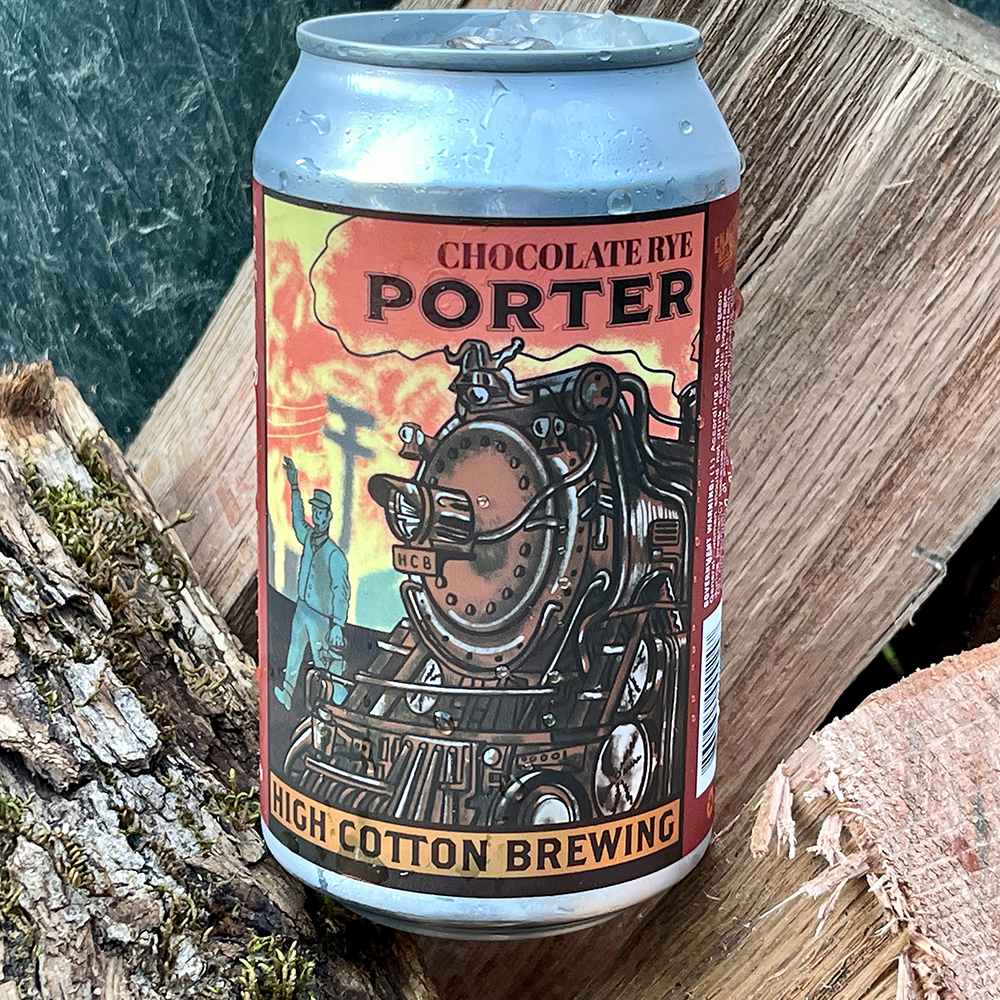
High Cotton
Chocolate Rye Porter, porter, 5.5 percent ABV
This is just begging to be made into a beer float. Is that even a thing? Well, it is now. Gimme a mug and a scoop of vanilla, please. — SC
As a kid I used to go to my grandmother’s and attack the bowl of 85-percent Ghirardelli chocolate squares. This beer reminds me of those, a bitter and oh-so-slightly-sweet meld of chocolate flavor swirling softly amidst the dark porter. Truly heavenly, and the perfect fall/winter beer. — SXC
It smells just like coffee as I bring it up for a sip. It tastes like the holidays. If ReinBeer above is the fun, gaudy Christmas party with lil smokies and Dirty Santa, this beer is the classier sit-down, roast beef dinner with your well-to-do cousins. — TS
This is the kind of beer I’m in the mood for when the leaves are falling. It’s well-balanced, not too sweet, with a complex set of flavors. This is one of my favorite beers from a Memphis brewery. — CM
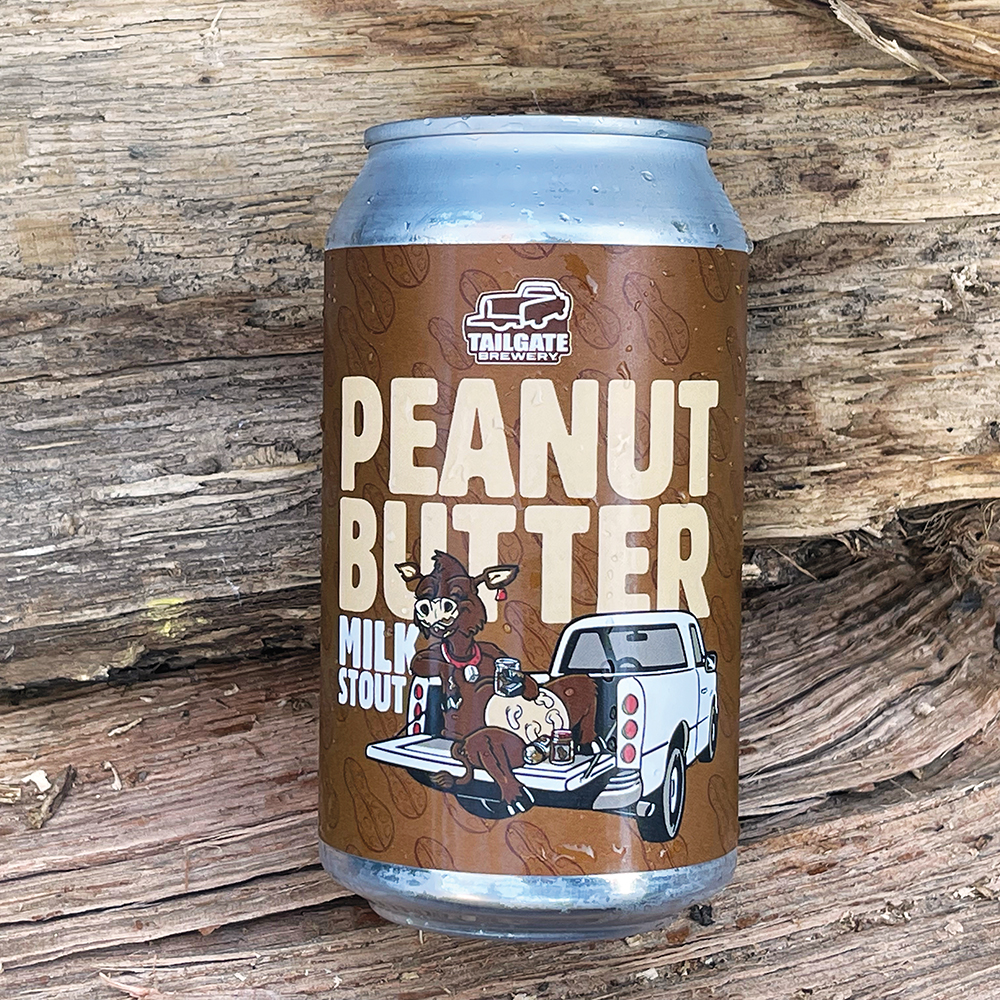
Tailgate
Peanut Butter Milk Stout, sweet/milk stout, 5.8 percent ABV
Yum! Nutter Butters in a cup. This would make a great boozy milkshake. — SC
My notes, verbatim: “Fuck it. I love the shit out of this beer.” I couldn’t help it, even though I don’t usually like these beers and wanted not to like this one. I can’t explain the magic that converted me, but it was there. — TS
It’s got a great nose, it pours like motor oil, and the flavor is deep and satisfying — somewhere between a Reese’s Peanut Butter Cup and a pecan pie. Those brewers up there in Nashville are making great beer. — CM
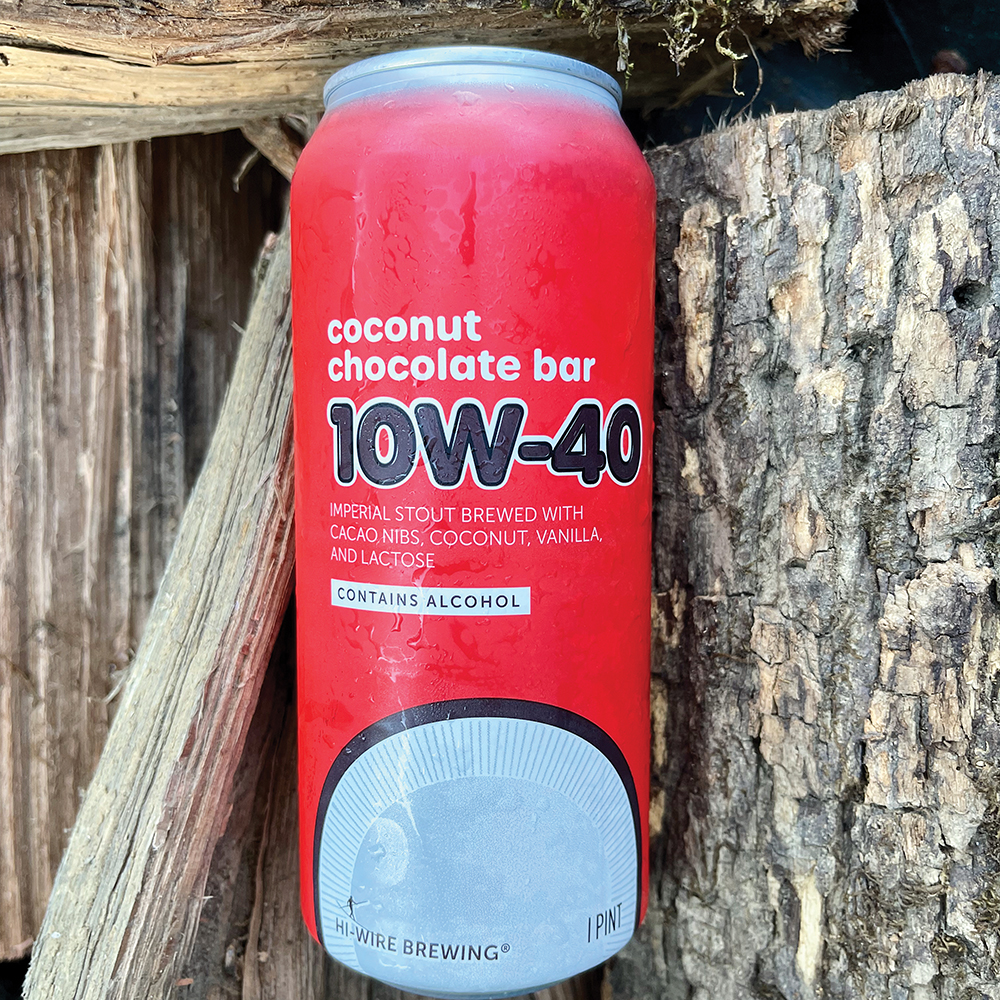
Hi-Wire
Chocolate Coconut Bar 10W-40 Imperial Stout, stout, 8 percent ABV
It’s a silky, creamy chocolate imperial stout with a bit of lingering coconut. I expected more of a Mounds bar-esque taste. Not quite as good as the chocolate rye porter, but solid if you’re a stout fan. — SXC
Whoa. Whoa. Whoa. The coconut goes way over the top here and turns the candy bar flavor into suntan lotion. — TS
As a fan of stouts, chocolate cake, and coconuts, this sounds like it should be right up my alley. But it’s just chewy and thick and not much else. I’m not sure I even tasted the coconut. Meh. — CM

Soul & Spirits
Smoke Stack, smoked dark lager, 5.7 percent ABV
Ever played musical chairs around a campfire to avoid the smoke blowing in your eyes? But every time you move, it follows, permeating your hair and clothes and your entire respiratory system? That usually sucks, but while this tastes like inhaling a smoke cloud, it’s a bold beer, and I’m here for it. — SC
The smoke hits you right up front, like when the wind from a fire pit wafts your way. It’s meant to emulate Memphis barbecue, and like Memphis barbecue, it’s a slow burn. Not a beer to crush, but could go well with a rack of ribs. — BV
Ever had a beer that’s smoky like a good scotch? Made with Tennessee barley roasted over mixed hardwoods intended to evoke the flavors of Memphis barbecue, this one was a new experience for me. Not sure I could have more than one at a sitting, but this is an excellent beer. — CM
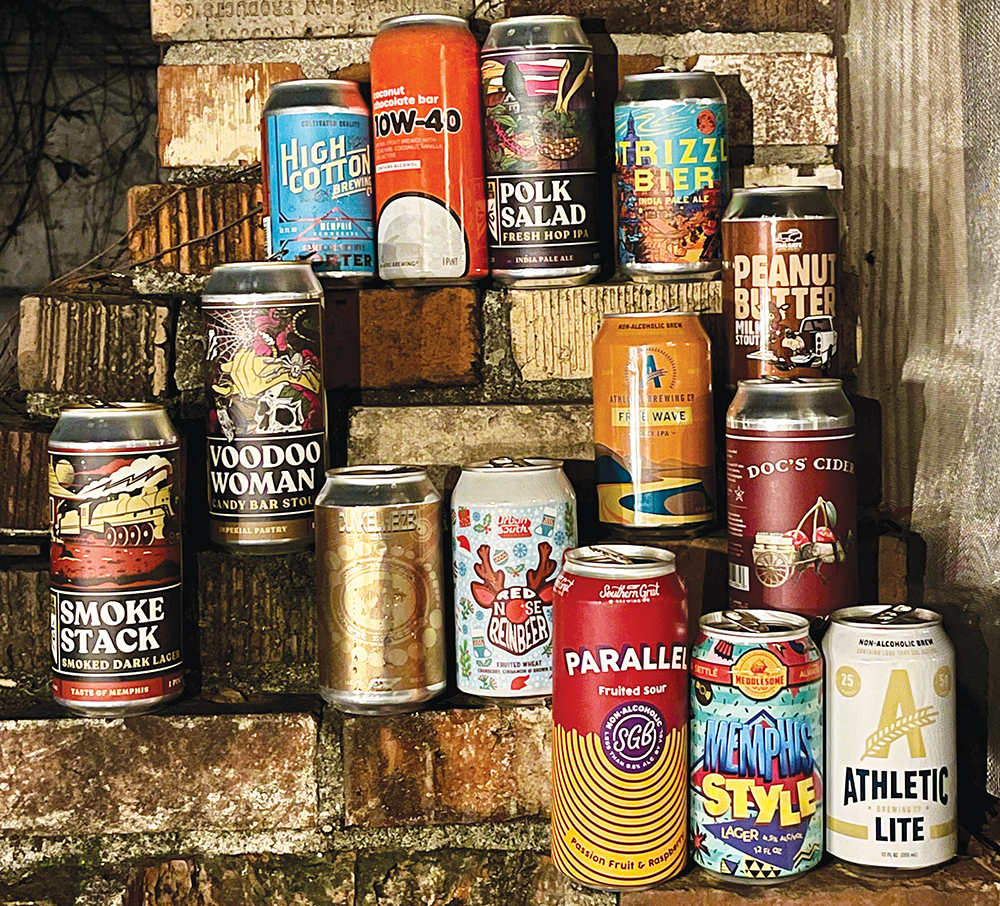
 Justin Fox Burks
Justin Fox Burks 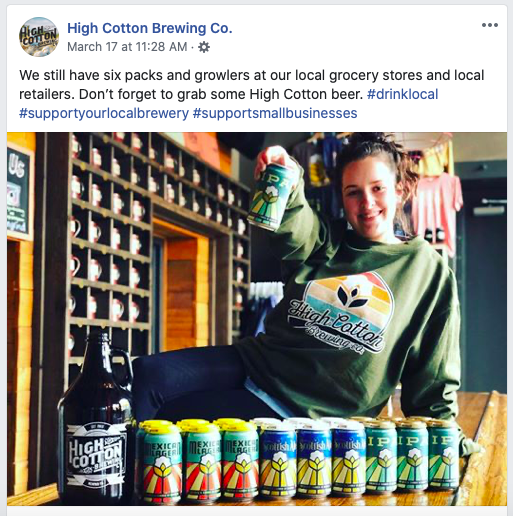 High Cotton Brewing
High Cotton Brewing 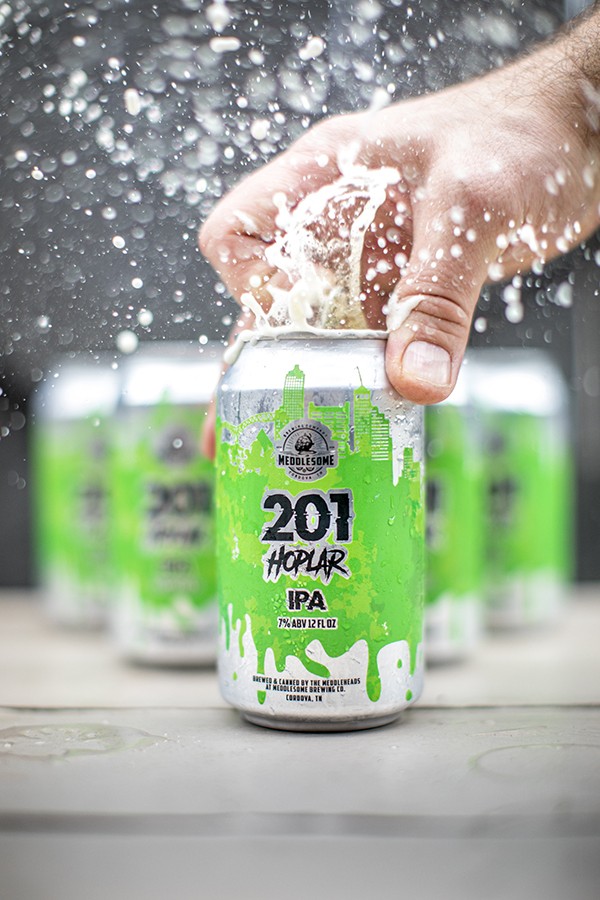
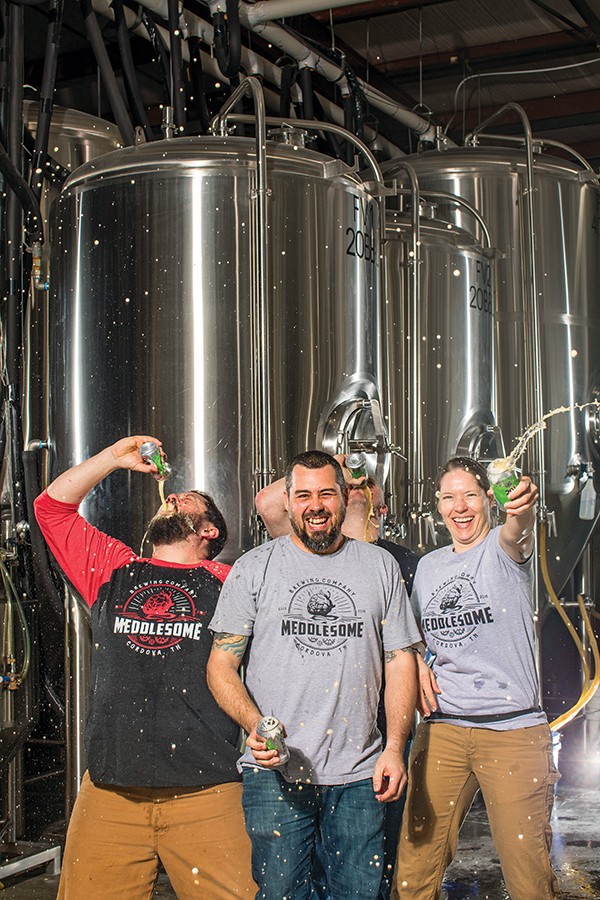
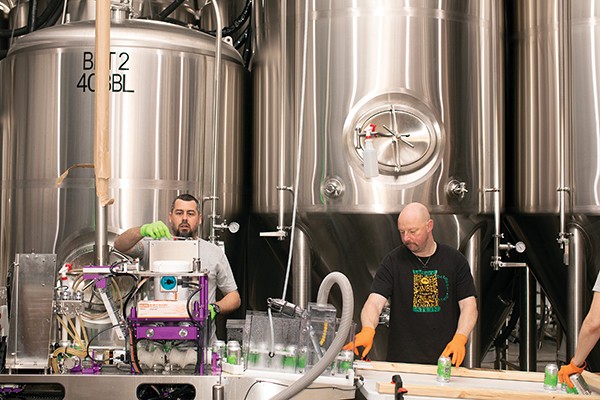
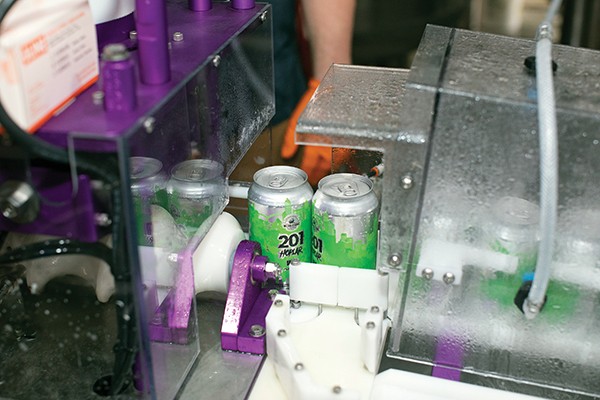


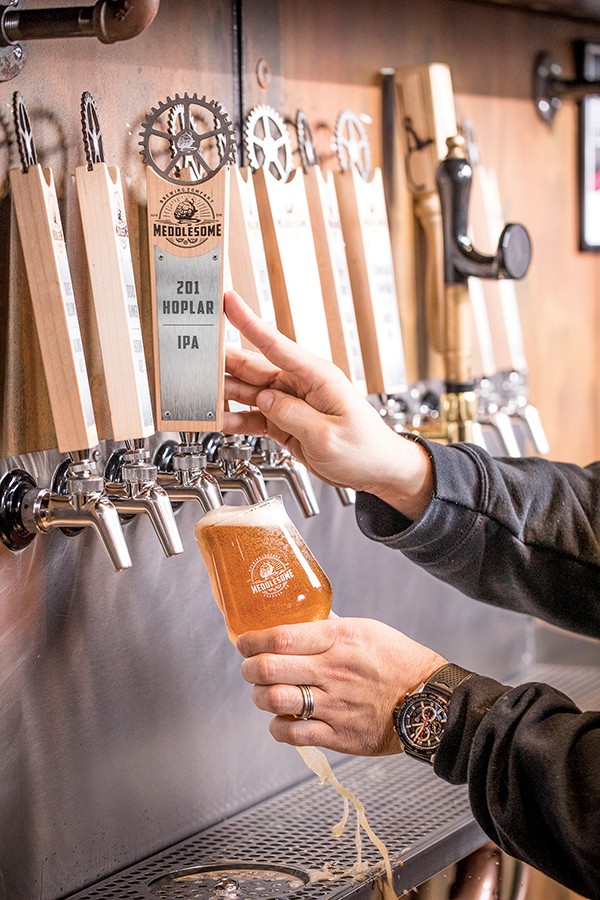

 John Klyce Minervini
John Klyce Minervini 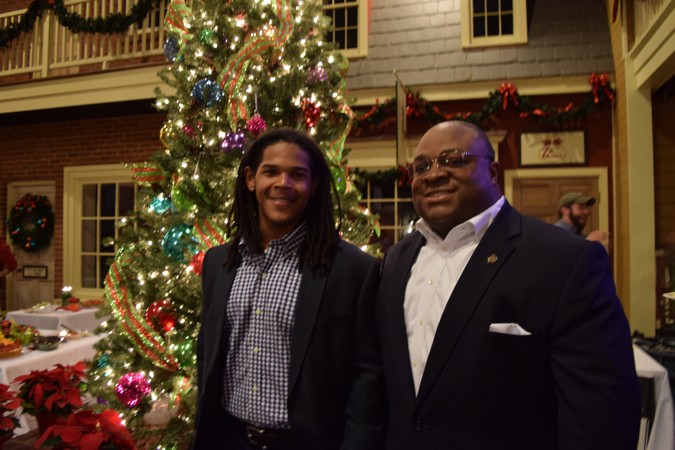 John Klyce Minervini
John Klyce Minervini 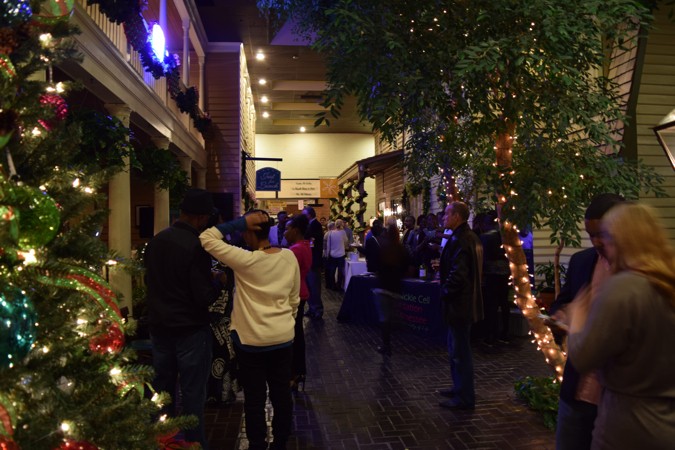 John Klyce Minervini
John Klyce Minervini